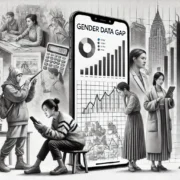Diversity and inclusion have become more than just buzzwords; they are essential components of successful organizations. For women in leadership roles, the commitment to fostering diversity and inclusion isn’t just about social responsibility—it’s also about driving innovation, attracting top talent, and ensuring long-term sustainability. To achieve these goals, it’s crucial for women-led organizations to measure their progress effectively and consistently. In this article, we delve into the key metrics that women-led organizations should embrace to create diverse and inclusive workplaces that thrive.
Representation Metrics
One of the fundamental aspects of measuring diversity and inclusion is assessing representation within the organization. This involves understanding the composition of your workforce, particularly in leadership roles. Here are some vital metrics to consider:
- Gender Representation: Track the percentage of women in leadership positions across all levels of your organization. Ensure that this figure reflects the diverse talent pool available.
- Intersectionality: Go beyond gender and consider how factors like race, ethnicity, age, and sexual orientation intersect with gender in leadership roles. A diverse leadership team should encompass a broad range of backgrounds and experiences.
- Succession Planning: Analyze the pipeline of female talent within your organization. Evaluate the percentage of women in mid-level positions who are being groomed for leadership roles. Effective succession planning is key to maintaining a diverse leadership team.
Pay Equity Metrics
Achieving gender pay equity is not only a matter of fairness but also a reflection of an organization’s commitment to inclusion. Key metrics in this area include:
- Gender Pay Gap: Regularly assess the gender pay gap within your organization. Identify any disparities and take action to address them. Remember that pay equity extends to bonuses, incentives, and other compensation elements.
- Promotion and Salary Increases: Monitor the distribution of promotions and salary increases by gender. Ensure that women have equal opportunities for advancement and pay raises.
Employee Engagement Metrics
Creating an inclusive workplace is not just about numbers; it’s about fostering a sense of belonging and engagement among all employees. Metrics to consider include:
- Employee Surveys: Conduct regular surveys to gauge employee satisfaction and inclusivity. Look for disparities in responses based on gender or other demographics and take action to address them.
- Retention Rates: Analyze the retention rates of women in leadership roles. High turnover among female executives can indicate issues with inclusion and support.
Leadership Development Metrics
Investing in leadership development for women is essential for long-term diversity and inclusion. Key metrics in this area include:
- Mentorship and Sponsorship Programs: Track participation and outcomes of mentorship and sponsorship programs for women. These programs can significantly impact career progression.
- Training and Development: Assess the participation of women in leadership development programs and training. Ensure that opportunities for skill enhancement are equitable.
Marketplace Metrics
Measuring the impact of diversity and inclusion efforts on the marketplace is equally important. Metrics in this category include:
- Customer and Supplier Diversity: Evaluate your organization’s relationships with diverse customers and suppliers. A diverse customer base and supplier network can lead to increased innovation and market reach.
- Brand Perception: Monitor how your organization is perceived in the marketplace regarding diversity and inclusion. Positive perceptions can lead to increased brand loyalty and support.
In today’s fast-paced business environment, women in leadership roles are at the forefront of driving diversity and inclusion. By measuring key metrics related to representation, pay equity, employee engagement, leadership development, and marketplace impact, women-led organizations can create more inclusive workplaces that not only attract top talent but also foster innovation and long-term sustainability. As women continue to break barriers and lead with vision and purpose, the commitment to measuring diversity and inclusion remains crucial. It’s not just about embracing change; it’s about driving it.
The path to success for women in leadership lies in setting measurable goals, tracking progress, and continuously striving for improvement in diversity and inclusion. By doing so, we not only enhance our organizations but also pave the way for a more inclusive and equitable future for all.






